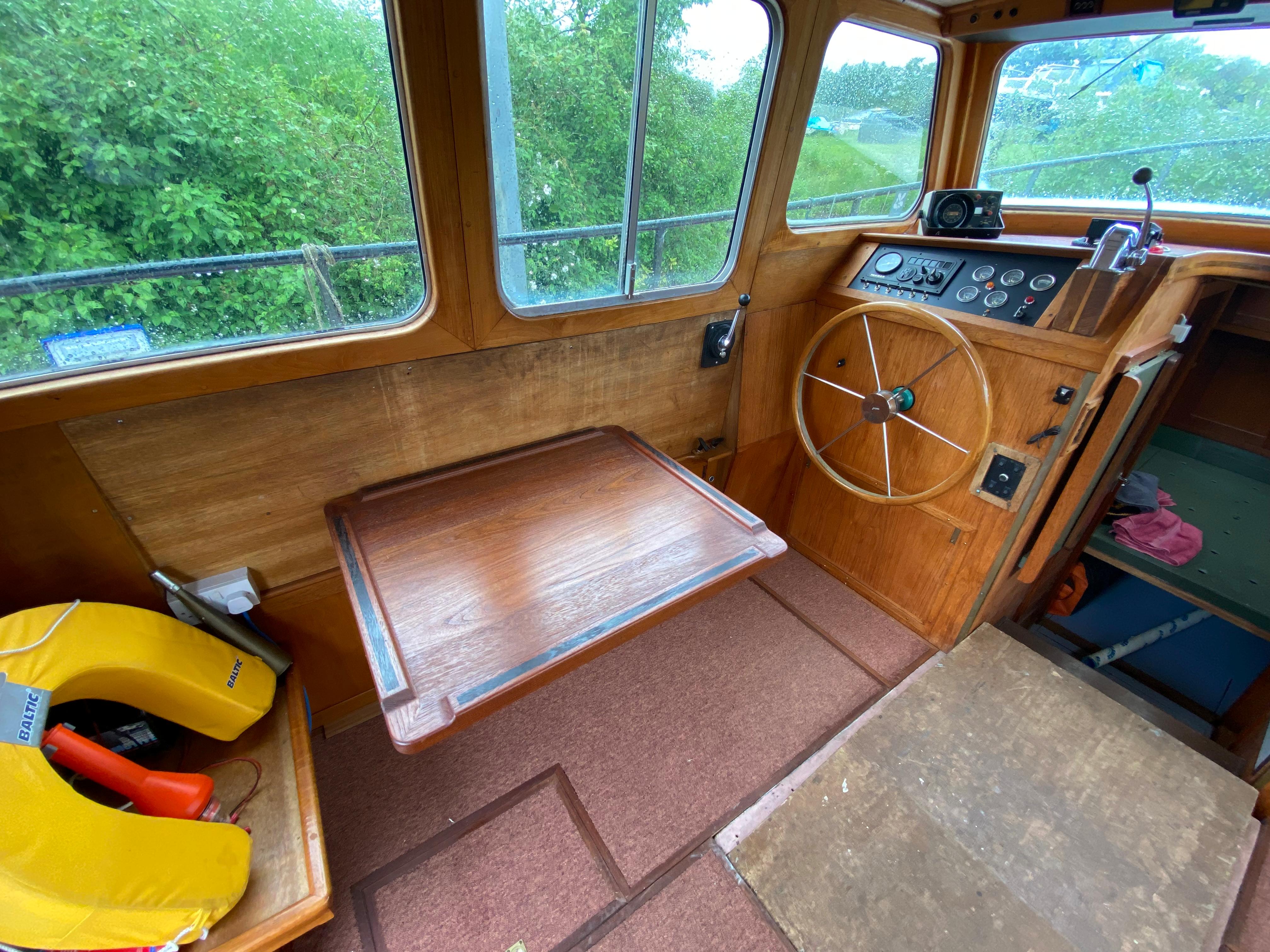

The building had by now fallen into disrepair and was placed under a demolition order. By 1970 the Eel Pie Island Commune had become the UK's largest hippie commune. In 1969, the hotel was occupied by a small group of local anarchists including illustrator Clifford Harper. Eventually, after a raid by the Fire Chief, I closed down and walked. I had rows with the fire department as the emergency exits were chained shut to stop people bunking in. We then did Colonel Barefoot's Killer Punch (cider, cooking brandy and cinnamon) and we gave it away along with beer in half pint plastic disposable cups. We had a bar doing tea, soft drinks, hot dogs and hamburgers. Smythe said: "There were two stages: the headliner was on the big stage and the support on the small stage with the light show projectionist above it. I called it Colonel Barefoot's Rock Garden and plastered west London with quad crown posters." Smythe booked bands such as Edgar Broughton, Free, Deep Purple, King Crimson, Genesis, Wishbone Ash and Mott The Hoople. In 1969, the club briefly reopened as Colonel Barefoot's Rock Garden, with bands such as Black Sabbath, The Edgar Broughton Band, Stray, Genesis, and Hawkwind (then known as Hawkwind Zoo) performing there.Ĭaldwell Smythe (entrepreneur, vocalist, ex- Riot Squad and, briefly, The Honeycombs) said: "I approached the owner, Mr Snapper, who lived in Kingston and we agreed a rental deal. In 1967, the hotel was forced to close because the owner could not meet the £200,000 cost of repairs demanded by police. John Mayall's Bluesbreakers (featuring Eric Clapton).Cyril Davies Rhythm & Blues All Stars.Long John Baldry's Hoochie Coochie Men (including Rod Stewart).

įamous names who performed at the dance hall between 19 include: Some time afterwards, Arthur Chisnall took over the running of the club and continued to promote various jazz bands and then, in the 1960s, rock and R&B groups.

In 1956, trumpeter Brian Rutland, who ran a local band called The Grove Jazz Band, started jazz sessions at the newly reopened hotel. The island was the site of the Eel Pie Island Hotel, originally a genteel 19th-century three-storey building that later hosted ballroom dancing during the 1920s and 1930s. Eel Pie Island Hotel Ī 1900 postcard of the Eel Pie Island Hotel It was not until 1957 that the first bridge to the ait was built.

A set of rope pulleys operated in the early 20th century for assisting transporting light goods. Ī bridge was proposed to Middlesex County Council or the Metropolitan Borough of Twickenham in 1889. Together the parts form the same isle as today. The east end is marked with marsh plantation and liable to flood it was in the same maps measured at 1.775 acres (0.7 ha). Its named features were a large Boat House, the Island Hotel, a bowling green in the west and the Thames Electric & Steam Launch Works. The ait is recorded in at least two distinct parts in detailed maps until the end of the 19th century the west part was built up in height and measured 7.160 acres (2.9 ha). This island comprises about eight acres, chiefly pleasure-grounds, and in the centre is the Eel-Pie House, noted for the last two centuries as a favourite resort for refreshment and recreation to water parties, and persons repairing hither for the amusement of fishing the old building was taken down in 1830, and a commodious edifice, comprising a good assembly-room measuring 50 feet by 15, erected on the site. Samuel Lewis's national gazetteer of 1848 devotes a large minority of the text covering Twickenham to the island saying it is:Ĭalled Twickenham Ait. When a new inn was built in 1830 to replace it, the former venue was alternatively called a "dingy wooden cottage" or an "unassuming but popular little barn". Eel Pie House Īn inn was on the Ait by 1743 and in the 19th century it was a popular stopping point for steamer excursions. Some mesolithic red deer antler bone hand-made implements have been retrieved from the island's shore.


 0 kommentar(er)
0 kommentar(er)
